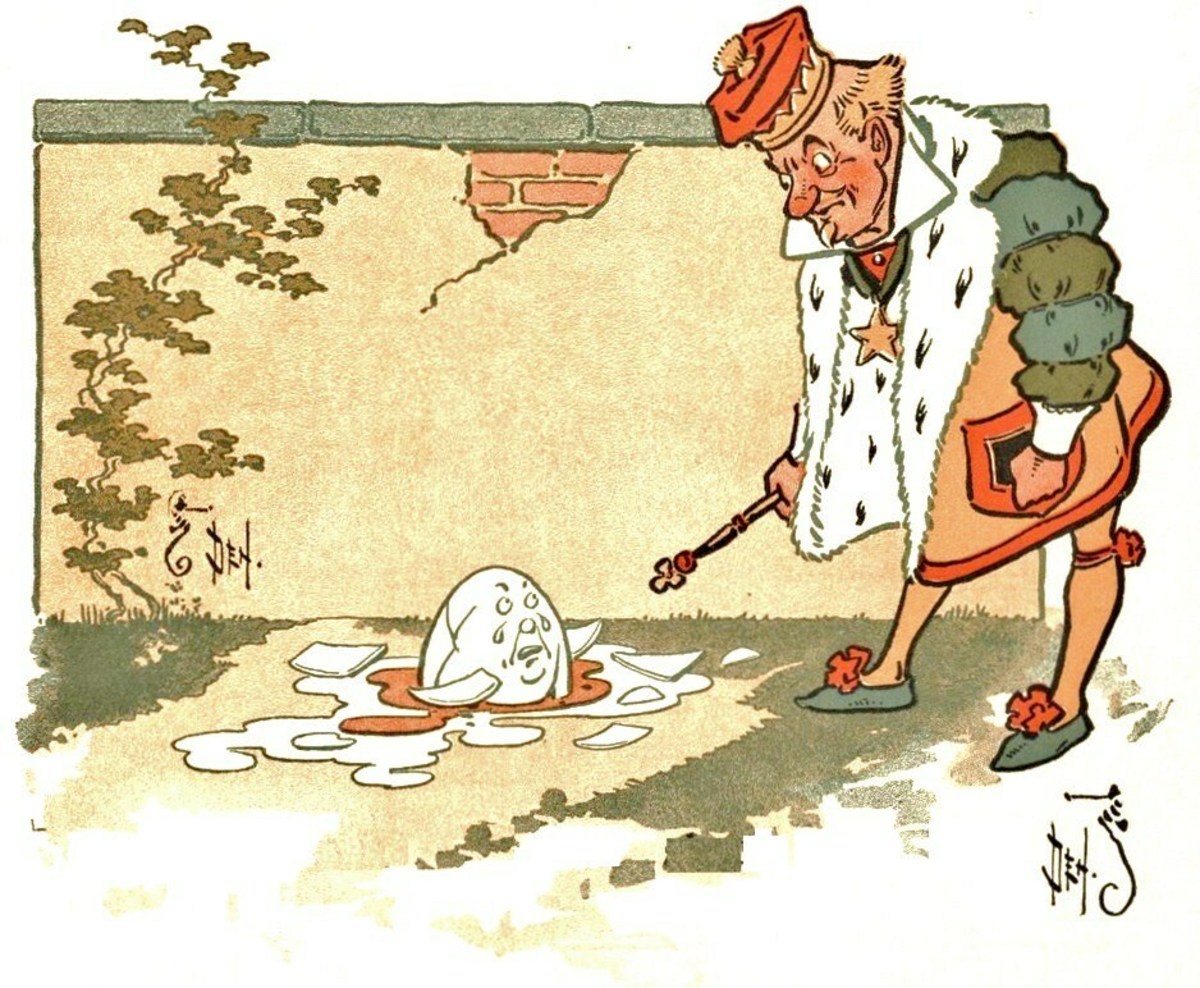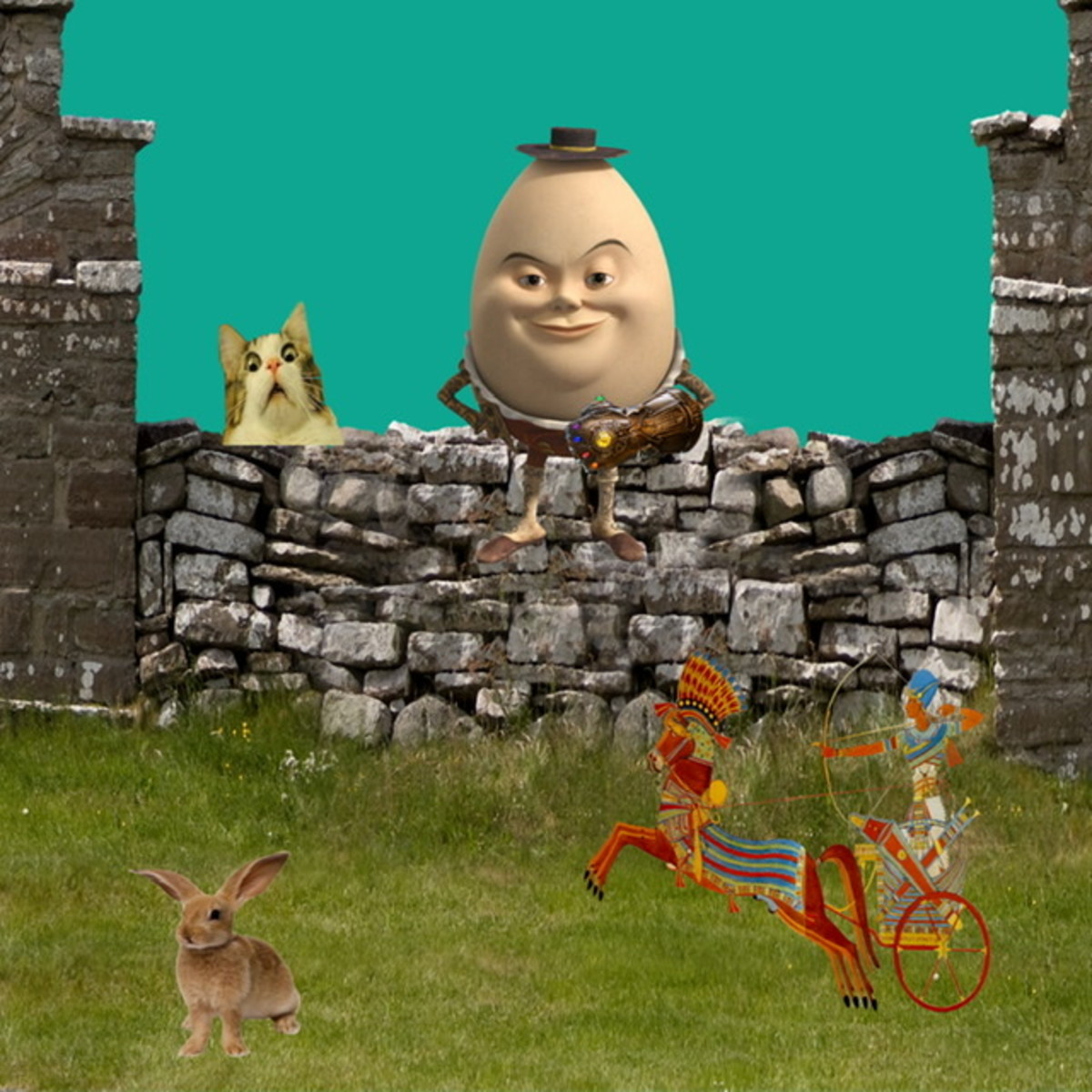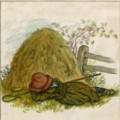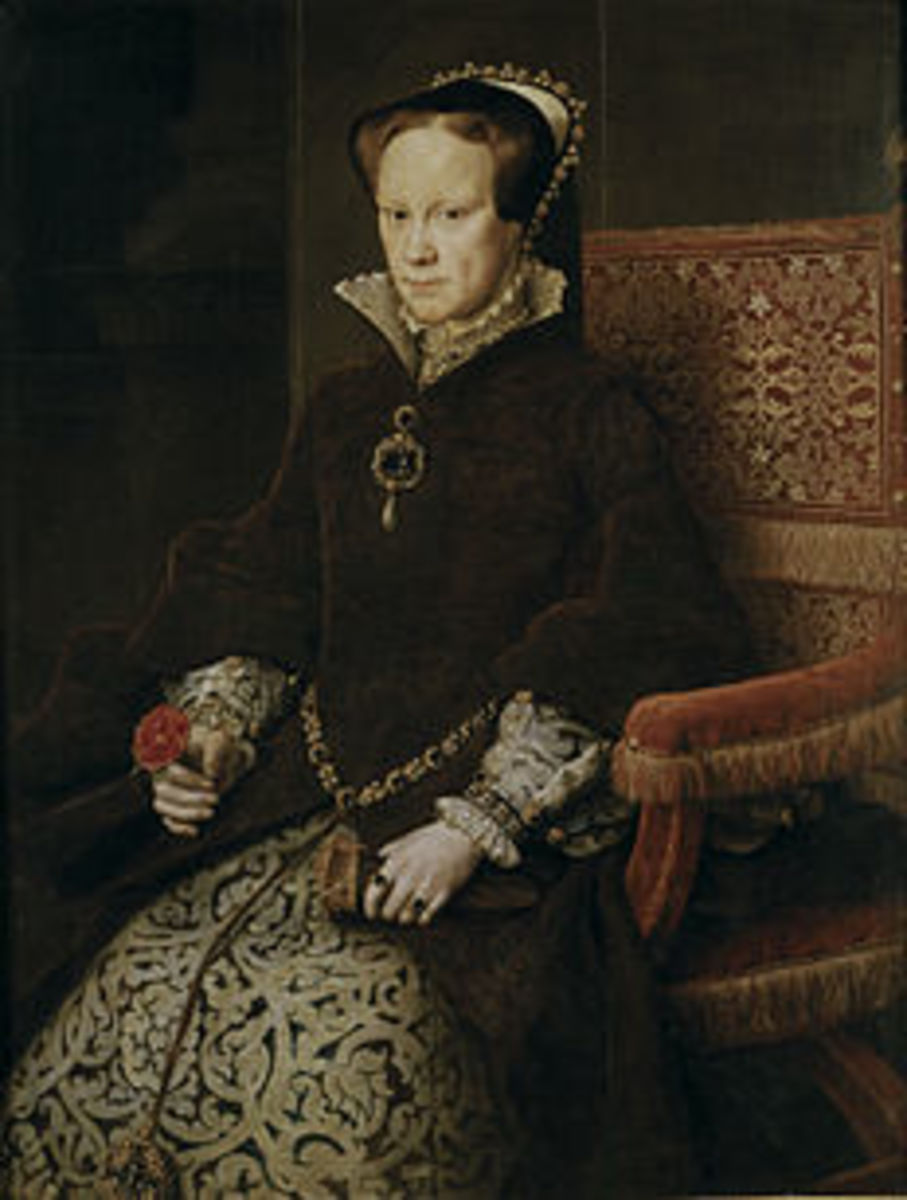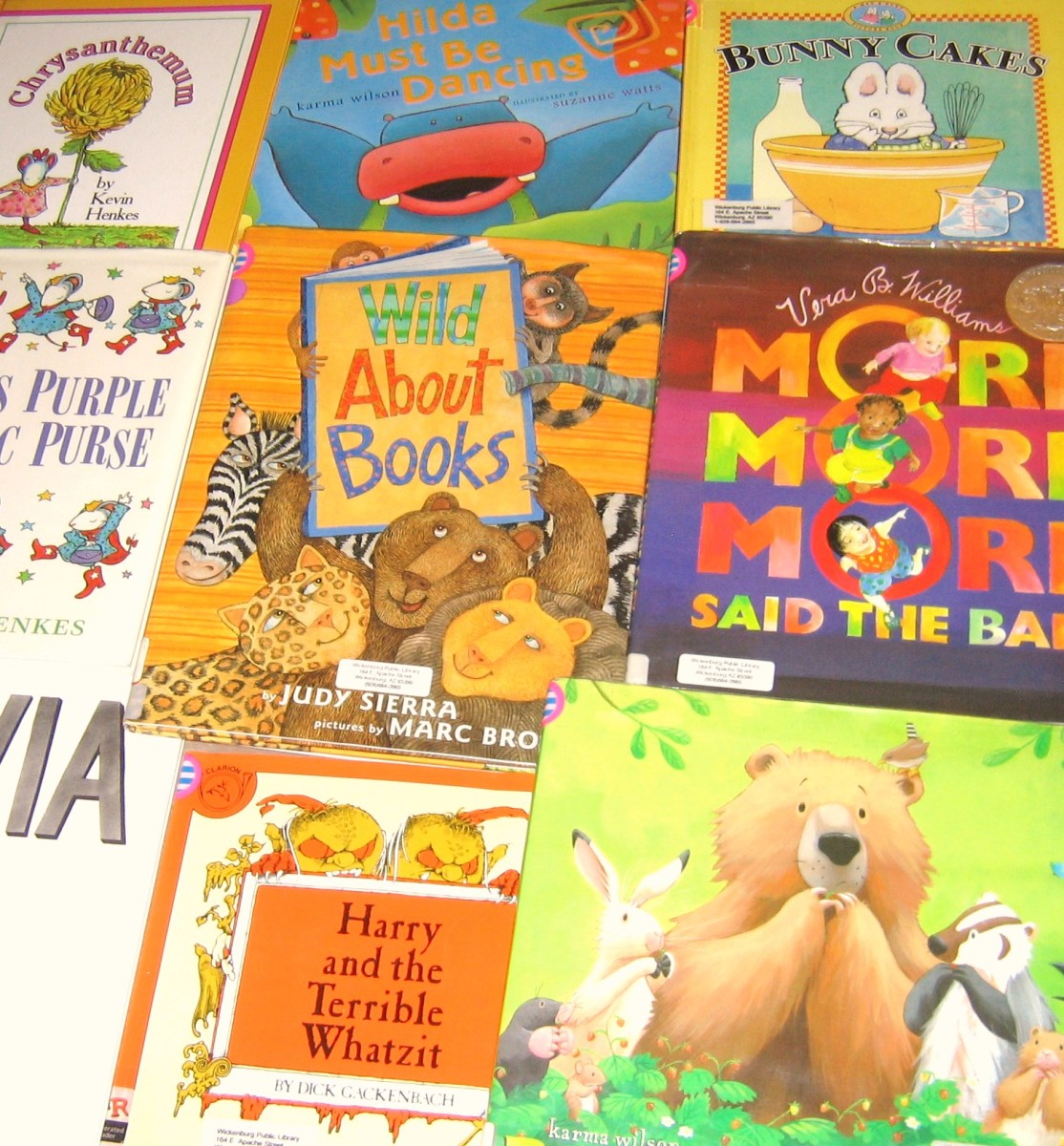Nursery Rhymes: History & Origins
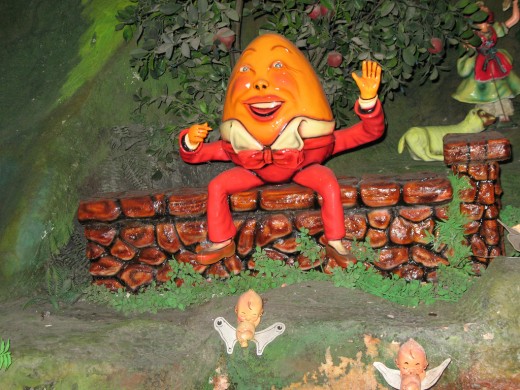
A Hidden History
Nursery rhymes are passed down from generation to generation. We teach our children these stories, but do we even really know what they mean?
Nursery Rhymes have historically been used to express opinions that could not be spoken freely. Some seemingly silly rhymes included political statements which if they had been spoken straightforward, would be punishable by death.
Most nursery rhymes were from Europe, particularly England, but a few came from others areas of the world - even America contributed a few.
More Nursery Rhyme History Online
If you really want to know more, the best place is the first site below, hands down. They have it ALL!
- Nursery Rhymes lyrics, origins and history
All of the lyrics to the most traditional nursery rhymes with their origins, history and meanings. The most popular nursery rhymes are Jack and Jill, Humpty Dumpty, Sing a song of sixpence and Hey diddle diddle! Every child loves being told nursery r - Nursery Rhymes
Nursery Rhymes - It is generally believed that there is a relationship between many nursery rhymes and England's history, but origins are often just theories...
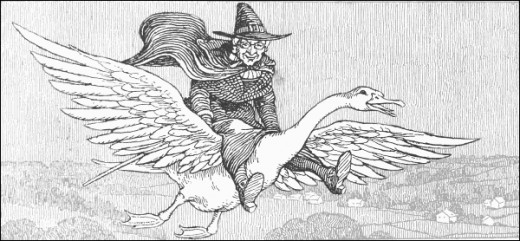
Who was Mother Goose?
"Mother Goose" currently evokes the image of a friendly old lady riding on the back of a goose, but lets look back at where she originated:
- Old Mother Goose
When she wanted to wander
Would fly through the air
On a very fine gander.
AND - Mother Goose had a house;
It stood in the wood
Where an owl at the door
As sentinel stood.
These rhymes actually point to Mother Goose as being a witch! She flew on a goose (rather then a broom); she lived alone in the woods. But the big tip off is the "owl at the door". An owl is a 'familiar' (like in Harry Potter). It is an animal that witches were believed to be able to take the form of.
In the 16th and 17th centuries, people were very concerned with witches, because they were unaware of why certain things occurred (storms, diseases,...) and needed to have some explanation. So, witches became a scapegoat.
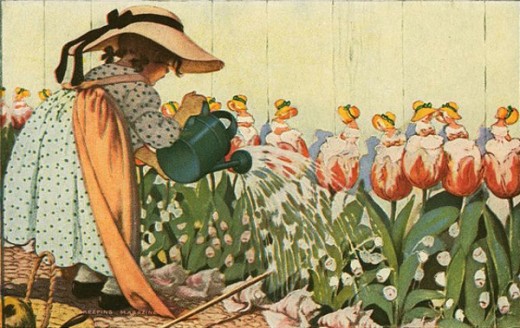
Mary Mary Quite Contrary
- Mary Mary quite contrary,
How does your garden grow?
With silver bells and cockle shells
And pretty maids all in a row.
Two possible theories...
1 - This is a traditional English nursery rhyme and it thought to refer to Mary Tudor, daughter of King Henry VIII. She is commonly called Bloody Mary.
The garden in the rhyme refers to graveyards. Queen Mary was a staunch Catholic and Protestants who refused to give up the Protestant faith were often killed (growing the graveyards).
What about the silver bells and cockle shells? Well, those were instruments of torture. The 'silver bells' were thumbscrews which crushed the thumb, and 'cockle shells' were even more gruesome.
'Maids' is short for Maidens. The maiden was what we now call the guillotine!
or perhaps...
2- Mary, Mary is actually Mary Stuart known as Mary Queen of Scots. She was sent to the Court of France and raised Catholic and married the Dauphin (making her temporarily Queen Consort of France). When her husband died she returned to Scotland to claim the throne, but lowland Scotland was staunch Protestant.
Mary, Mary Quiet Contrary (she's a Cathloic Monarch in a Protestant Country)
How does your garden grow (a reference to the court she brought with her)
With Silver Bells (the Bells used during the Catholic Mass)
and Cockle Shells (she was accused of being unfaithful to her second husband (an idiot who she married only to buy favor with the Protestant lords, it was a "shell' of a marriage), to use the phrase of the day he was "cuckold" and this is a play on words).
And Pretty Maids all in a Row (a reference to "The Four Marys" that were her ladies in waiting and constant companions Mary Beaton, Mary Seton, Mary Fleming and Mary Livngstone)
(This theory was emailed to me by N. Cosgrove)
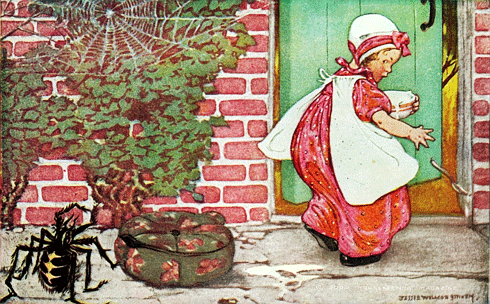
Little Miss Muffet
- Little Miss Muffet sat on a tuffet
Eating her curds and whey,
Along came a spider,
Who sat down beside her
And frightened Miss Muffet away
As it happens, there actually was a Little Miss Muffet. Patience Muffet was the daughter of Dr. Muffet (1553-1604) who was a famous entomologist, who wrote the first scientific catalog of British Insects.
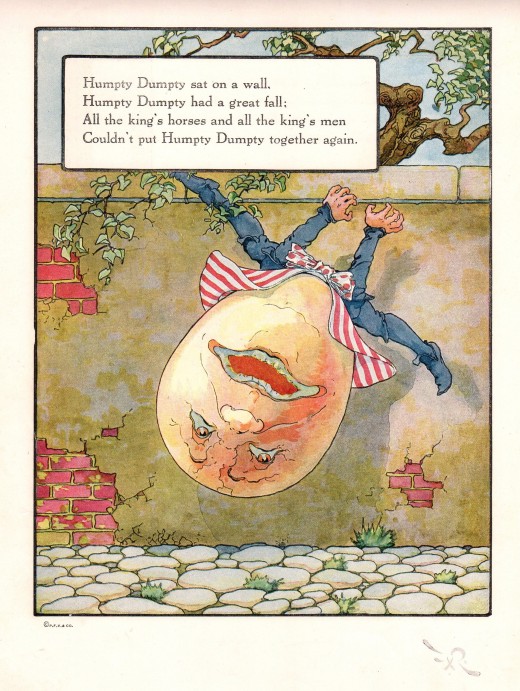
Humpty Dumpty
- Humpty Dumpty sat on a wall,
Humpty Dumpty had a great fall.
All the King's horses,
And all the King's men
Couldn't put Humpty together again!
~ OR ~
- Humpty dumpty sat on a wall,
Humpty dumpty had a great fall;
Threescore men and threescore more,
Could not place Humpty as he was before.
Humpty Dumpty was a colloquial term used in fifteenth century England describing someone who was obese. Humpty Dumpty somehow became an egg in the illustrations in Alice in Wonderland by Lewis Carroll.
But the Humpty Dumpty in this rhyme is believed to be a large cannon! The cannon was used during the English Civil War (1642-1649) in the Siege of Colchester (June 13, 1648 - August 27, 1648). Colchester was strongly fortified by the Royalists and was laid to siege by the Parliamentarians (Roundheads). In 1648, the town of Colchester was a walled town with a castle and several churches and was protected by the city wall. St Mary's Church stood immediately alongside the city wall. A huge cannon, colloquially called Humpty Dumpty, was strategically placed on the wall next to St Mary's Church.
A shot from a Parliamentary cannon damaged the wall Humpty Dumpty sat on causing the cannon to "take a great fall". The Royalists, or Cavaliers (all the King's men) attempted to raise Humpty Dumpty on to another part of the wall. They probably attempted to use horses to help lift it, hence all the kings horses and all the kings men.
They we're, as we know, unsuccessful. This had a drastic consequence for the Royalists as the strategically important town of Colchester fell to the Parliamentarians after a siege lasting eleven weeks.
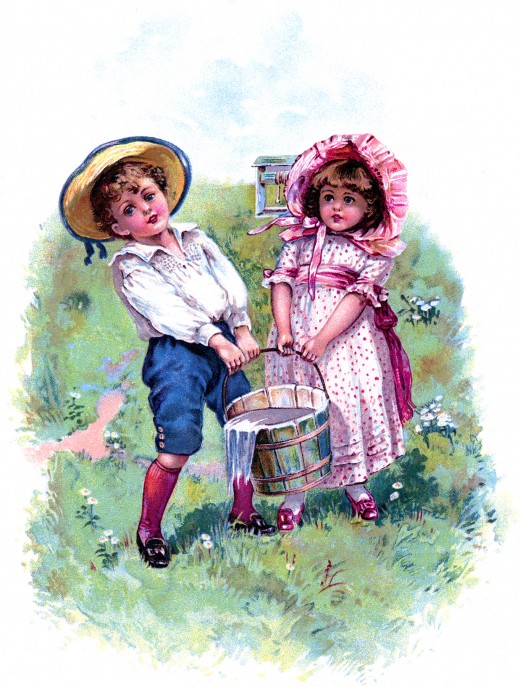
Jack and Jill
- Jack and Jill went up the hill
to fetch a pail of water
Jack fell down and broke his crown
And Jill came tumbling after.
Jack and Jill is based on French history. Jack is said to be King Louis XVI, who was beheaded in 1793(lost his crown) followed by his Queen Marie Antoinette, Jill (who came tumbling after).
The rhyme was found in print 2 years later in 1795.
Three Blind Mice
- Three blind mice, three blind mice,
See how they run, see how they run,
They all ran after the farmer's wife,
Who cut off their tails with a carving knife,
Did you ever see such a thing in your life,
As three blind mice?
This is another rhyme about Bloody Mary!
Queen Mary I, the staunch Catholic, and her husband King Philip of Spain had massive estates (the farms). The 'three blind mice' were three Protestant noblemen who were convicted of plotting against the Queen. She did not have their tails cut off...she burned them at the stake!
Old Mother Hubbard
- Old Mother Hubbard
Went to the cupboard
To get her poor doggie a bone,
When she got there
The cupboard was bare
So the poor little doggie had none.
In this rhyme, Old Mother Hubbard references the most important statesman and churchman of the Tudor history period in 16th century, Cardinal Thomas Wolsey.
Cardinal Wolsey angered King Henry VIII, by refusing to facilitate the King's divorce from Queen Katherine of Aragon, his queen of many years.
King Henry VIII wished to divorce Queen Katherine in order to marry Anne Boleyn who he was in love with. King Henry (the dog) went to Cardinal Wolsey (Old Mother Hubbard) for a divorce (the bone). The cupboard refers to the Catholic Church.
In the end, King Henry did get his 'bone' but in doing so, he broke the Catholic Church. and formed the English Protestant church.
The rhyme Little Boy Blue also refers to Cardinal Thomas Wolsey.
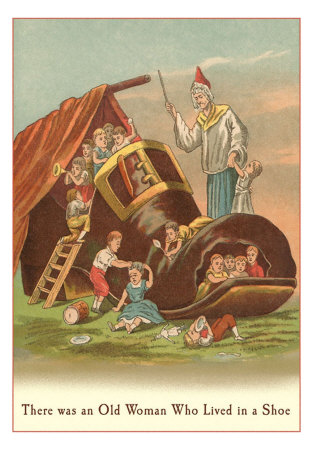
There was an old woman
- There was an old woman who lived in a shoe,
She had so many children she didn't know what to do!
So she gave them some broth without any bread,
And she whipped them all soundly and sent them to bed!
There are two theories of the history of this rhyme - both in English History.
The first references Queen Caroline as the 'old woman'. Caroline was the wife of King George II who had eight children.
The second theory places King George as the 'old woman'. King George was the one to begin the men's fashion of wearing white powdered wigs, thus making him the old woman. The 'children' in this theory are the members of parliament and the bed was the Houses of Parliament. The term 'whip' is still used in the English Parliament to describe a member of Parliament who is assigned to making sure that all members 'toe the party line'.
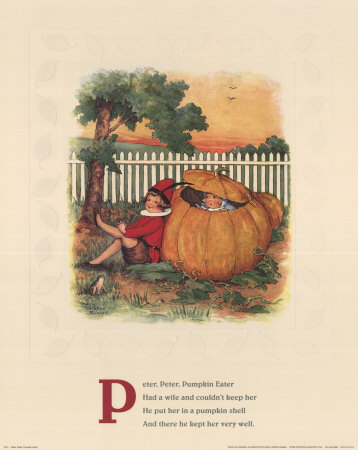
Peter Peter Pumpkin Eater
- Peter Peter pumpkin eater,
Had a wife and couldn't keep her!
He put her in a pumpkin shell,
And there he kept her very well!
The exact origin of this rhyme is not exactly know, however we can tell in general where it originated. Pumpkins are indigenous to America - not England. At the time that these rhymes came into being, the common Englishman would not be familiar with pumpkins.
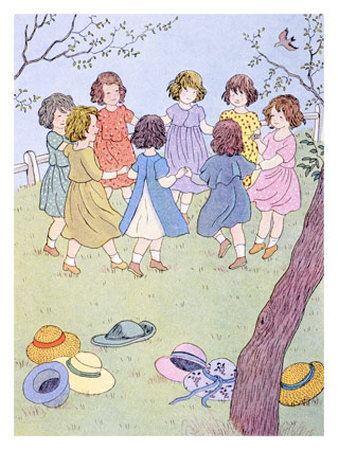
Ring around the rosy - AKA Ring-a-Ring o'Rosies
- Ring around the rosy
A pocketful of posies
"Ashes, Ashes"
We all fall down!
Older version...
- Ring-a-Ring o'Rosies
A Pocket full of Posies
"A-tishoo! A-tishoo!"
We all fall Down!
Many people do actually know the roots of this rhyme.
Ring around the rosy goes back to the black plague in England, circa 1665 (or perhaps earlier in the 1300s when the bubonic plague first hit).
The symptoms of the plague included a rosy red rash in the shape of a ring on the skin (ring around the rosy), and violent sneezing (a-tishoo, a tishoo).
It was believed that the disease was spread by bad smells. Therefore people carried pockets and pouches of sweet smelling herbs (posies)
The death rate was over 60% (we all fall down) and the plague was only halted by the Great Fire of London in 1666 which killed the rats which carried the disease which was transmitting via water sources.
After death the bodies were cremated (Ashes Ashes).
Jack Sprat
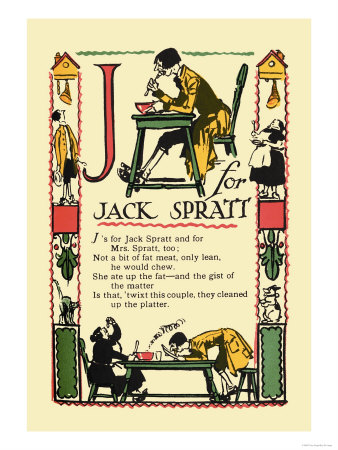
Jack Sprat
- Jack Sprat could eat no fat
His wife could eat no lean
And so betwixt the two of them
They licked the platter clean
Jack ate all the lean,
Joan ate all the fat.
The bone they picked it clean,
Then gave it to the cat
Jack Sprat was wheeling,
His wife by the ditch.
The barrow turned over,
And in she did pitch.
Says Jack, "She'll be drowned!"
But Joan did reply,
"I don't think I shall,
For the ditch is quite dry."
Again, two theories...
1- The Jack Sprat in this English rhyme is King Charles I (1625-1649) and his Queen Henrietta Maria(1609-1669). When King Charles (Jack Sprat) declared war on Spain, parliament refused to finance him (leaving him lean). So after the angered King dissolved Parliament, his wife imposed an illegal war tax (to get some fat).
2-Another theory puts Jack Sprat as Richard the Lionheart (Richard I, 1157-1199) and his younger brother King John (1166-1216).
In 1189 John (Jack Sprat) married Joan, the ambitious and greedy daughter and heiress of the Earl of Gloucester ("Joan ate all the fat").
When King Richard went on Crusade, 1190-1194, John attempted to take the crown of England. On his return from the Crusades King Richard was taken hostage by Duke Leopold demanding a ransom of 150,000 marks. John reluctantly had to raise the ransom, leaving the country destitute for years and reducing John's inheritance (they picked it clean). The ransom was paid and Richard was released.
John was crowned King of England following the death of Richard in 1199. He had his marriage to Joan annulled (he ditched her!), she was never acknowledged as queen . She then married again to Geoffrey de Mandeville and her third husband was Hubert de Burgh.

